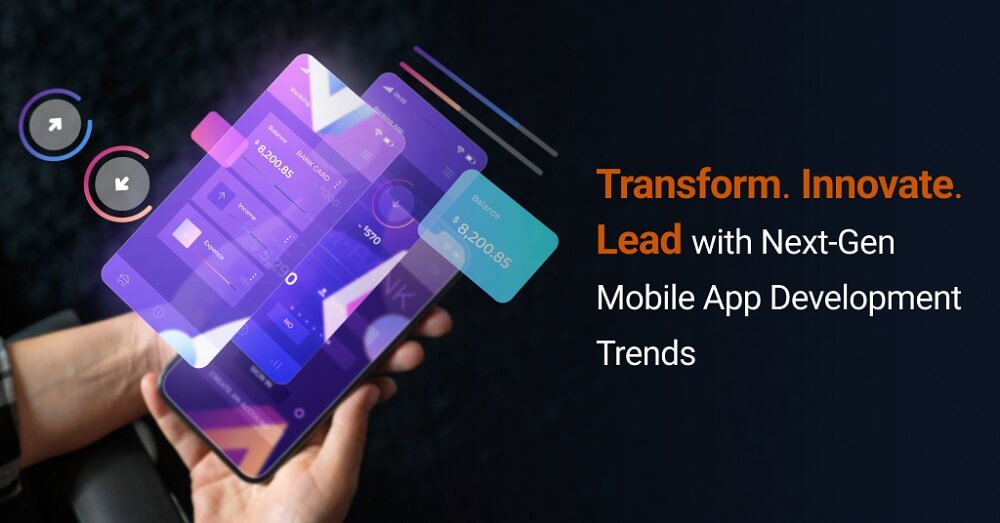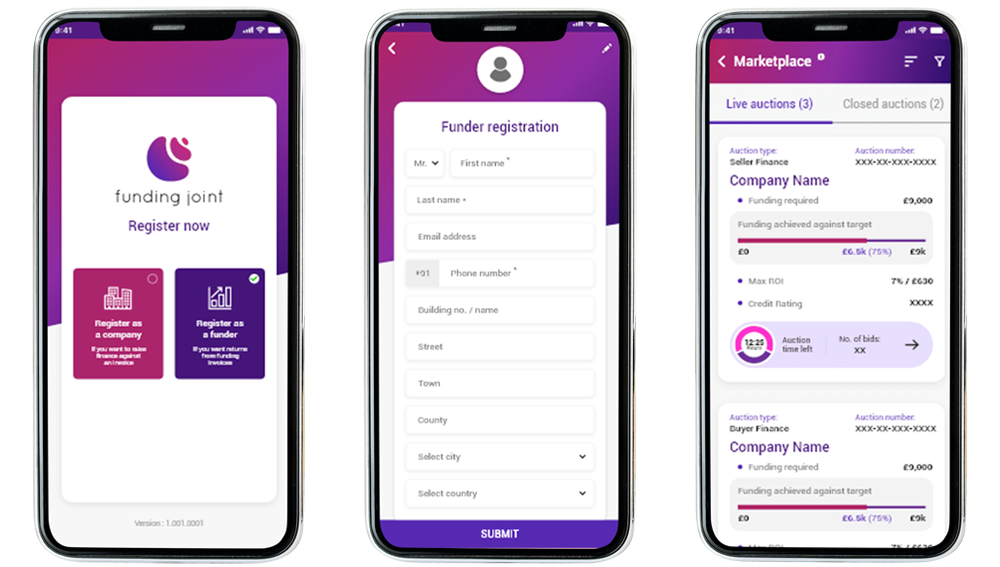
Mobile app development in 2026 will fundamentally redefine how enterprises design, deploy, and scale digital experiences. The era of static, monolithic applications is giving way to cloud-independent architectures, AI-native frameworks, and privacy-first ecosystems built to operate seamlessly at the edge. In this new paradigm, mobile apps are no longer standalone utilities; they are intelligent service layers that connect users, data, and business systems in real-time.
As AI and machine learning applications integrate across every layer of the technology stack, apps are evolving into autonomous digital companions, capable of learning, adapting, and anticipating user needs with unprecedented precision. This convergence of intelligence, connectivity, and contextual awareness is transforming the app from a simple interface into a decision-support engine that drives business outcomes.
By 2026, the global mobile app market is projected to surpass $614.40 billion, signaling not just growth but a complete reinvention of value creation. For enterprises, success will depend on how quickly they adopt intelligent architectures, embrace automation across the development lifecycle, and treat data not merely as an asset but as the foundation of continuous innovation. As Android app development continues to dominate the global landscape, organizations that leverage platform-native intelligence, edge computing, and AI-driven design will set the benchmark for performance, scalability, and user engagement in the digital era.
With AI-powered personalization in applications and voice recognition user interfaces to AR and VR mobile apps, the next generation of mobile app development trends 2026 will force product and technology leaders to reconsider their digital strategy.
Key Mobile App Development Trends for 2026
As we approach 2026, the mobile app landscape is evolving at an unprecedented pace. Companies that invest early to partner with mobile app development services that have expertise in the next-gen technologies will achieve a faster innovation cycle and stronger market resilience. Before making further delays, check the latest app development trends.
1. AI-Native App Architectures & Personalization
AI is not a layer anymore, but a key foundation of modern app development. All successful mobile applications by 2026 will have AI and machine learning applications embedded directly into their structure for predictive, context-aware, and personalized experiences. AI-based personalization will be based on on-device models that will make decisions faster and with advanced security.
Why it matters:
AI native applications provide super-low latency, enhanced privacy, and enhanced engagement. In the case of businesses, this would amount to improved retention, automated insights, and quantifiable ROI from each user interaction.
Read More: Shape the Future of Mobile Experiences with AI
2. Voice-Activated Interfaces and Conversational UX
The voice-activated interfaces in mobile apps will ensure the next generation of user experiences and interactions are human-like. People are not using touch-based navigation and instead are moving to conversational control with high levels of voice recognition integration in mobile apps, becoming the norm.
Why it matters:
Voice interfaces make interaction easier and more accessible, and they assist brands in reaching larger audiences. For enterprises, they also add new interaction measures and chances of personalization beyond the visual UX.
3. AR & VR Integration for Immersive Mobile Experiences
The AR and VR mobile app trends 2026 will transform industries by integrating digital content into real-life environments. AR/VR integration will drive interactive, high-end experiences all the way to smartphones, whether in retail and real estate, education, and healthcare.
Why it matters:
Customer satisfaction and retention of customers are increased by immersive technologies that convert passive browsing into engaging storytelling. Some of the strategic ones include the creation of new revenue models by offering virtual product trials and experiential marketing.
4. Blockchain in Mobile Apps to Build Trust and Transparency
Beyond crypto, Blockchain in mobile apps will become the foundation of digital trust. It is enabling safe data exchange, open dealings, and verifiable online identities in finance, health, and mobility in the business enterprise.
Why it matters:
Blockchain offers security through a self-sovereign, decentralized trust layer that curbs fraud and enhances brand equity. It is particularly essential with an application that touches payments, identity, or intellectual property.
5. IoT App Development for Connected Ecosystem
The development of IoT apps is moving towards intelligent, predictive ecosystems as the number of devices keeps rising. Mobile apps are now serving as a control center of sensors, wearable devices, and connected systems, and are driven by edge AI and real-time analytics.
Why it matters:
IoT integration enhances operational efficiency and establishes continuous loops of engagement between the users and devices. Data-driven insights, automation, and new models of service delivery are beneficial to businesses.
6. Low-Code / No-Code Development Acceleration
Low-code no-code app development trend is transforming the pace of enterprise productivity. It allows rapid prototyping and deployment as the non-technical teams can develop working app modules with controlled environments.
Why it matters:
Low-code solutions reduce time-to-market and development expenses, and they are scalable when used with conventional engineering. It is a strategic catalyst of accelerated innovation and product development.
7. Advanced UX and Adaptive Design Systems
The mobile app UX design trends 2026 will prioritize flexibility, inclusivity, and smartness. Apps will adapt dynamically to real-time layouts, color, and functionality depending on real-time context, intent, and the emotional input of embedded AI.
Why it matters:
Adaptive design enhances interaction and lowers churn rate as it enhances personal behavior patterns in the user experience. It makes UX dynamic instead of being merely designed for the interaction process.
8. Beacon Technology and Hyper-Personalized Apps
The Beacon technology is reviving as one of the enablers of context-aware mobile experiences. Integrated AI and edge computing beacons are now being used to support personalized interactions within retail, logistics, and smart city systems. The adoption curve of beacons is growing at a rapid pace; the global beacon market will grow to USD 31.61 billion by 2026 and go further to USD 231.36 billion by 2031, with a current value of USD 1.36 billion.
Why it matters:
Beacons enable hyper-personalized marketing, micro-location analytics, and indoor navigation. For businesses, they contribute to user engagement and eliminate the physical-digital gap. Tactically, combining beacons and the IoT app development will result in one ecosystem, where location, context, and personalization meet to produce quantifiable business results.
Real World Success Stories
Transforming Short-Term Business Finance with an Innovative P2P Crowdfunding Platform
About Client
A fintech startup, Funding Joint, envisioned a dynamic digital ecosystem to connect small and medium-sized enterprises (SMEs) seeking short-term funding with individual investors via a peer-to-peer crowdfunding platform. The goal was to enable fast, transparent, and compliant financing outside traditional banking systems, leveraging an auction-style bidding model to optimize capital allocation.
Project Challenges
- Handling complex financial transactions across non-bank channels and manual wallets to reduce dependency on legacy banking infrastructure.
- Implementing a dynamic auction system capable of ranking bids, sequencing split-bids, and managing multiple participants efficiently.
- Ensuring transparency and regulatory compliance by tracking credits, debits, debt collection, and intermediary payments, while supporting charitable contributions.
Our Solution
- Introduced a robust digital wallet system to manage fund distribution, repayments, and non-bank transactions securely in real time.
- Developed a real-time bidding mechanism allowing investors to place competitive bids, with split bids and auction sequencing, supported by live updates and interactive UI.
- Built a comprehensive admin dashboard enabling transaction oversight, audit-trail logging, and live monitoring of auctions, user activity and fund flows.

Results
- Successful platform launch connecting businesses and over 500 individual investors in a transparent, efficient ecosystem.
- Transaction costs reduced by approximately 25%, while process efficiency improved by 78%.
- SMEs gained faster access to capital outside traditional banking constraints, democratizing funding and investment participation.
Read Full Story: Funding Joint
Conclusion
As we head to 2026, mobile apps are becoming intelligent systems that can think, listen, adapt, and predict. The combination of AI machine learning applications, AR and VR functionality, blockchain-assisted security, and the development of IoT-based applications will form a key link where users and companies interact seamlessly.
To be ahead, organizations need to focus on the strategy and hire mobile app developers who combine elements of intelligence, privacy, and scalability. Enterprises that move early will set the benchmark for next-generation interaction, and others will be trapped in the old architecture. Investing in the latest trends is economical, and waiting for a long time will cost more.
Frequently Asked Questions
1. What are the key mobile app development trends for 2026?
The top mobile app development trends 2026 include AI-native architectures, low-code platforms, AR/VR integration, blockchain security, and edge computing. These innovations are transforming mobile apps into intelligent, adaptive ecosystems that enhance performance and user engagement.
2. How is AI changing mobile app development?
AI and machine learning applications are enabling mobile apps to predict user behavior, automate processes, modernize legacy apps, and deliver hyper-personalized experiences. From chatbots to intelligent analytics, AI is redefining how apps evolve and interact in real time.
3. Why is iOS app development still important in 2026?
iOS app development remains critical due to its global reach, flexibility, and advanced security features. With advancements in AI integration and cross-platform frameworks, iOS continues to power the majority of enterprise-grade and consumer apps worldwide.
4. What role does IoT play in future mobile applications?
IoT app development connects devices, data, and systems in real time. It enables predictive insights, automation, and enhanced customer experiences, making it essential for industries like logistics, healthcare, and smart manufacturing.
5. How can businesses stay competitive in mobile app innovation?
To stay competitive, enterprises should adopt intelligent architectures, leverage AI-powered personalization, and invest in agile development models. Partnering with a trusted mobile app development company like TechnoScore helps businesses Hire Mobile App developers who build scalable, future-ready solutions.



